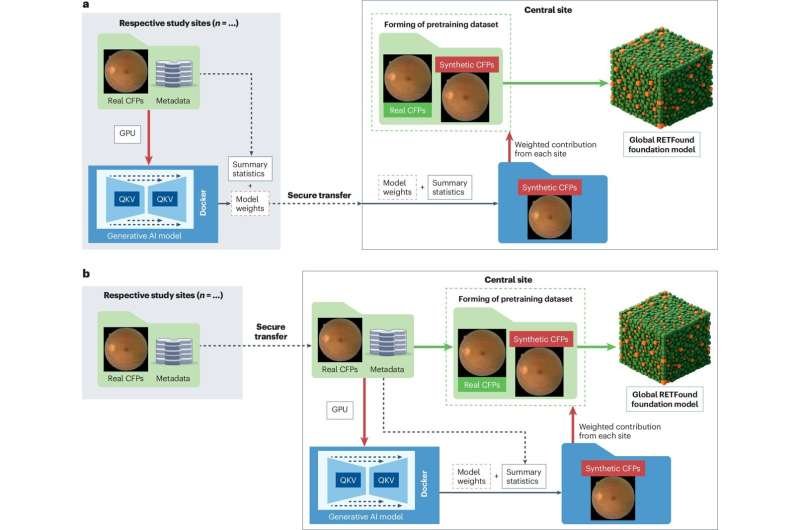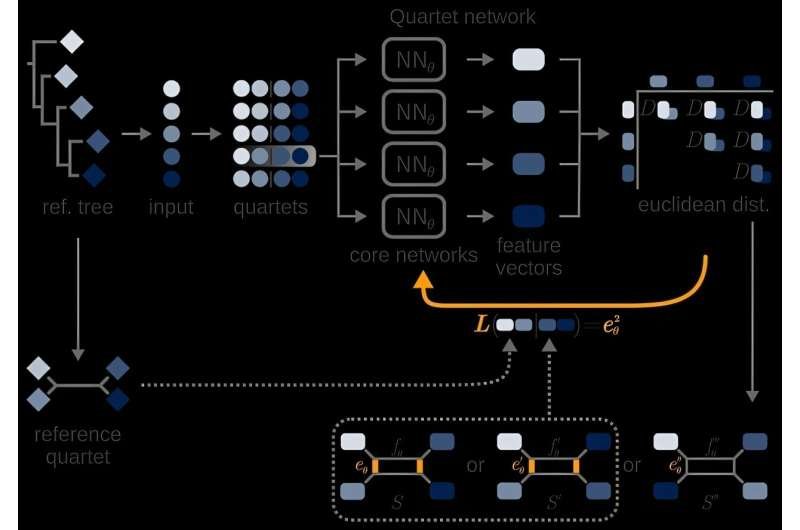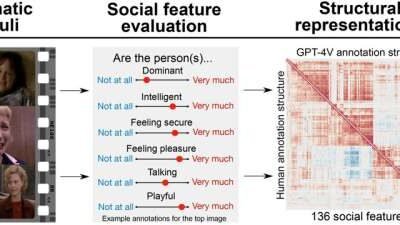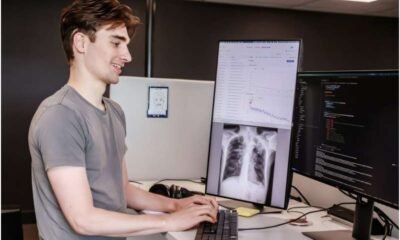AI Research
First global medical AI foundation model drives 100-country research collaboration

A global research consortium of over 100 study groups in more than 65 countries has launched the Global RETFound initiative, a collaborative effort to develop the first globally representative Artificial Intelligence (AI) foundation model in medicine, using 100 million eye images.
As described in Nature Medicine, the initiative is one of the largest medical AI collaborations ever undertaken, producing one of the most geographically and ethnically diverse medical datasets assembled for AI training purposes. The data will span Africa, the Middle East, South America, Southeast Asia, the Western Pacific, and the Caucasus region.
Led by researchers from the National University of Singapore Yong Loo Lin School of Medicine (NUS Medicine), Moorfields NHS Foundation Trust, University College London (UCL), and the Chinese University of Hong Kong (CUHK), the consortium will develop its model using an unprecedented dataset of over 100 million color fundus photographs (photos of the back of the eye), sourced from more than 65 countries.
The global initiative builds on the success of RETFound, the first foundation model for retinal and systemic disease detection. Published in Nature in 2023, RETFound was originally developed by researchers at Moorfields Eye Hospital and UCL Institute of Ophthalmology in London. The proof-of-concept study involved a smaller scale of 1.6 million fundus photographs curated by the INSIGHT Health Data Research Hub at Moorfields.
While RETFound demonstrated potential for medical AI applications, the next global model will expand the training data to encompass every continent except Antarctica.
“Current foundational models are trained on data that is geographically and demographically ‘narrow’, which limits their effectiveness and can perpetuate existing health inequalities,” explained Dr. Yih Chung Tham, Assistant Professor at NUS Medicine, and a NUS Presidential Young Professor, one of the key project leads. “The Global RETFound Consortium addresses this challenge through innovative approaches that enable broad international participation at unprecedented scale, while maintaining data privacy protections.”
A key innovation of the project is its flexible, two-pronged data sharing framework, designed to accommodate varying technical capacities and regulatory requirements across participating institutions. The first approach involves local fine-tuning of generative AI models at individual institutions, with only model weights shared centrally, ensuring no patient data leaves the originating site. The second pathway enables direct sharing of de-identified data through secure infrastructure for institutions that do not have local GPU resources or technical expertise.
“This dual approach allows participation from research groups regardless of their resource levels,” noted Pearse Keane, Professor of Artificial Medical Intelligence at UCL. “By combining real and synthetic data generation techniques, we can build a diverse, globally representative dataset without compromising security.”
Prof. Carol Cheung from The Chinese University of Hong Kong emphasized the broader implications: “This initiative has the potential to establish new international benchmarks for generalizability and fairness in medical AI. By providing researchers worldwide with access to a ‘globally-trained’ foundation model, we can accelerate development of AI tools tailored to local clinical needs with substantially reduced data and computational requirements.”
Dr. Tham added, “The Global RETFound model will undergo comprehensive evaluation across multiple ophthalmic and systemic diseases, including diabetic retinopathy, glaucoma, age-related macular degeneration and cardiovascular diseases. The model will be released under a Creative Commons license, making it freely and publicly available for non-commercial research use worldwide.”
While ophthalmology serves as the initial blueprint for such a collaborative framework, the researchers aim to share their methodologies widely, laying the groundwork for similar global initiatives across other medical specialties.
The project addresses growing concerns about AI bias in health care while demonstrating how international collaboration can advance medical AI development in an equitable way. The consortium welcomes additional researchers and institutions to join their collaborative effort towards more inclusive medical AI development.
More information:
Yih Chung Tham et al, Building the world’s first truly global medical foundation model, Nature Medicine (2025). DOI: 10.1038/s41591-025-03859-5
Citation:
First global medical AI foundation model drives 100-country research collaboration (2025, September 9)
retrieved 9 September 2025
from https://medicalxpress.com/news/2025-09-global-medical-ai-foundation-country.html
This document is subject to copyright. Apart from any fair dealing for the purpose of private study or research, no
part may be reproduced without the written permission. The content is provided for information purposes only.
AI Research
Equipping artificial intelligence with the lens of evolution

Artificial intelligence is now better than humans at identifying many patterns, but evolutionary relationships have always been difficult for the technology to decipher. A team from the Bioinformatics Department at Ruhr University Bochum, Germany, working under Professor Axel Mosig has trained a neural network to tackle this issue.
The AI can relate any data from different species in an evolutionary relationship and identify which characteristics have developed in what manner throughout the course of evolution.
“Our approach lets artificial intelligence look at data through the lens of evolution, in a way,” explains Vivian Brandenburg, lead author of the report published in the Computational and Structural Biotechnology Journal on August 22, 2025.
Providing prior knowledge about the ancestry tree
“Most previous AI algorithms have a hard time analyzing biological data through an evolutionary lens, because they don’t know what to look for and get confused by random patterns,” says Mosig. The team has provided its AI with prior knowledge of the phylogenetic trees of the species being analyzed.
This approach is based on classifying groups of four species into the presumably correct ancestry tree when training the AI. The tree contains information about close and distant relationships. “If all groups of four are correctly arranged, the entire ancestry tree can come into place like a puzzle,” explains Luis Hack, who also worked on the study. “The AI can then look in the sequences to identify patterns that have evolved throughout this tree.”
The kicker: This method works not only for genetic sequence data, but also for any other type of data, such as image data or structural patterns of biomolecules from various species. After the bioinformaticists from RUB initially established the approach for DNA sequence data as part of their current work, they are already exploring its applicability for image data.
“For example, you could reconstruct hypothetical images of evolutionary predecessor species,” says Hack, explaining the method’s potential for future projects.
More information:
Vivian B. Brandenburg et al, A quartet-based approach for inferring phylogenetically informative features from genomic and phenomic data, Computational and Structural Biotechnology Journal (2025). DOI: 10.1016/j.csbj.2025.08.015
Provided by
Ruhr University Bochum
Citation:
Equipping artificial intelligence with the lens of evolution (2025, September 10)
retrieved 10 September 2025
from https://phys.org/news/2025-09-equipping-artificial-intelligence-lens-evolution.html
This document is subject to copyright. Apart from any fair dealing for the purpose of private study or research, no
part may be reproduced without the written permission. The content is provided for information purposes only.
AI Research
Meta Details AI Research Efforts at TBD Lab

This article first appeared on GuruFocus.
Meta Platforms Inc. (META, Financials) is advancing its artificial intelligence ambitions through a small research group called TBD Lab, which consists of a few dozen researchers and engineers, Chief Financial Officer Susan Li said Tuesday at the Goldman Sachs Communacopia + Technology conference.
The unit, whose placeholder name has stuck, is tasked with developing next-generation foundation models over the next one to two years. Li described the team as talent-dense and said its work would help push Meta’s AI portfolio closer to the frontier.
TBD Lab is one of four groups within Meta’s Superintelligence Labs, created earlier this year after the company reorganized its AI strategy. The other groups include a products team anchored by the Meta AI assistant, an infrastructure team, and the Fundamental AI Research (FAIR) lab.
The restructuring followed senior staff departures and what was seen as a muted reception for Meta’s latest open-source Llama 4 model. CEO Mark Zuckerberg has since taken a direct role in recruiting AI talent, making offers to startups and contacting candidates himself through WhatsApp with multimillion-dollar packages.
Investors will look to Meta’s next earnings update for signs of progress in AI development and how new models could fit into its products and services.
AI Research
Commanders vs. Packers NFL props, SportsLine Machine Learning Model AI picks: Jordan Love Over 223.5 passing

The NFL Week 2 schedule gets underway with a Thursday Night Football matchup between NFC playoff teams from a year ago. The Washington Commanders battle the Green Bay Packers beginning at 8:15 p.m. ET from Lambeau Field in Green Bay. Second-year quarterback Jayden Daniels led the Commanders to a 21-6 opening-day win over the New York Giants, completing 19 of 30 passes for 233 yards and one touchdown. Jordan Love, meanwhile, helped propel the Packers to a dominating 27-13 win over the Detroit Lions in Week 1. He completed 16 of 22 passes for 188 yards and two touchdowns.
NFL prop bettors will likely target the two young quarterbacks with NFL prop picks, in addition to proven playmakers like Terry McLaurin, Tucker Kraft and Josh Jacobs. Green Bay’s Jayden Reed has been dealing with a foot injury, but still managed to haul in a touchdown pass in the opener. The Packers enter as a 3.5-point favorite with Green Bay at -187 on the money line. Before betting any Commanders vs. Packers props for Thursday Night Football, you need to see the Commanders vs. Packers prop predictions powered by SportsLine’s Machine Learning Model AI.
Built using cutting-edge artificial intelligence and machine learning techniques by SportsLine’s Data Science team, AI Predictions and AI Ratings are generated for each player prop.
For Packers vs. Commanders NFL betting on Monday Night Football, the Machine Learning Model has evaluated the NFL player prop odds and provided Bears vs. Vikings prop picks. You can only see the Machine Learning Model player prop predictions for Washington vs. Green Bay here.
Top NFL player prop bets for Commanders vs. Packers
After analyzing the Commanders vs. Packers props and examining the dozens of NFL player prop markets, the SportsLine’s Machine Learning Model says Packers quarterback Love goes Over 223.5 passing yards (-112 at FanDuel). Love passed for 224 or more yards in eight games a year ago, despite an injury-filled season. In 15 regular-season games in 2024, he completed 63.1% of his passes for 3,389 yards and 25 touchdowns with 11 interceptions.
In a 30-13 win over the Seattle Seahawks on Dec. 15, he completed 20 of 27 passes for 229 yards and two touchdowns. Love completed 21 of 28 passes for 274 yards and two scores in a 30-17 victory over the Miami Dolphins on Nov. 28. The model projects Love to pass for 259.5 yards, giving this prop bet a 4.5 rating out of 5. See more NFL props here, and new users can also target the FanDuel promo code, which offers new users $300 in bonus bets if their first $5 bet wins:
How to make NFL player prop bets for Washington vs. Green Bay
In addition, the SportsLine Machine Learning Model says another star sails past his total and has four additional NFL props that are rated four stars or better. You need to see the Machine Learning Model analysis before making any Commanders vs. Packers prop bets for Thursday Night Football.
Which Commanders vs. Packers prop bets should you target for Thursday Night Football? Visit SportsLine now to see the top Commanders vs. Packers props, all from the SportsLine Machine Learning Model.
-

 Business2 weeks ago
Business2 weeks agoThe Guardian view on Trump and the Fed: independence is no substitute for accountability | Editorial
-
Tools & Platforms4 weeks ago
Building Trust in Military AI Starts with Opening the Black Box – War on the Rocks
-

 Ethics & Policy1 month ago
Ethics & Policy1 month agoSDAIA Supports Saudi Arabia’s Leadership in Shaping Global AI Ethics, Policy, and Research – وكالة الأنباء السعودية
-

 Events & Conferences4 months ago
Events & Conferences4 months agoJourney to 1000 models: Scaling Instagram’s recommendation system
-

 Jobs & Careers2 months ago
Jobs & Careers2 months agoMumbai-based Perplexity Alternative Has 60k+ Users Without Funding
-

 Education2 months ago
Education2 months agoVEX Robotics launches AI-powered classroom robotics system
-

 Podcasts & Talks2 months ago
Podcasts & Talks2 months agoHappy 4th of July! 🎆 Made with Veo 3 in Gemini
-

 Education2 months ago
Education2 months agoMacron says UK and France have duty to tackle illegal migration ‘with humanity, solidarity and firmness’ – UK politics live | Politics
-

 Funding & Business2 months ago
Funding & Business2 months agoKayak and Expedia race to build AI travel agents that turn social posts into itineraries
-

 Podcasts & Talks2 months ago
Podcasts & Talks2 months agoOpenAI 🤝 @teamganassi





















